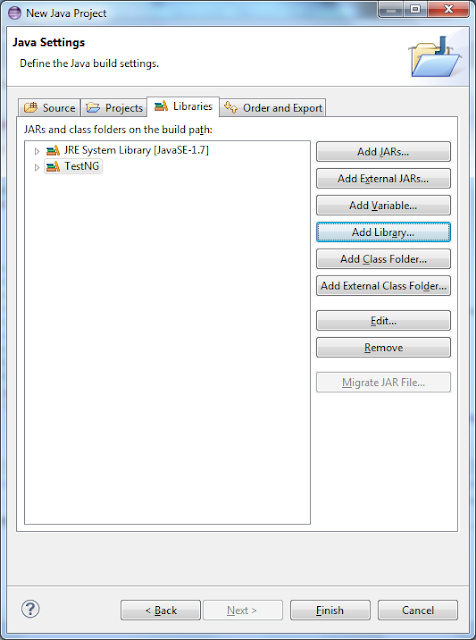When we run a script in any automation framework, Capturing and reporting images especially in case of failure is required. In this article, we will discuss different ways to capture screenshot and how to report with screenshot.
Steps to reporting with screenshot:
- Create an independent function to capture screenshot.
- Call the screenshot function from the reporting function based on whether to capture screenshot or not.
Different ways to capture screenshot are:
- Using Java.awt class - Recommend to use if automation interacts with other application together with web application.
- Using Selenium webdriver (selenium.TakesScreenshot) - Use this to capture screenshot if only web application is to be tested which are identified using selenium webdriver.
Below code shows how to capture screenshot using the above classes:
1: package testproject;
2: import java.awt.Rectangle;
3: import java.awt.Robot;
4: import java.awt.Toolkit;
5: import java.awt.image.BufferedImage;
6: import java.io.File;
7: import java.util.List;
8: import javax.imageio.ImageIO;
9: import org.apache.commons.io.FileUtils;
10: import org.openqa.selenium.OutputType;
11: import org.openqa.selenium.TakesScreenshot;
12: import org.openqa.selenium.WebDriver;
13: import org.openqa.selenium.ie.InternetExplorerDriver;
14: public class testingC {
15: static WebDriver driver;
16: public static void main(String[] args) throws InterruptedException {
17: // Connect to the Internet driver server and create an instance of Internet explorer driver.
18: File file = new File("D:\\selenium\\IEDriverServer.exe");
19: System.setProperty("webdriver.ie.driver", file.getAbsolutePath());
20: try
21: {
22: driver = new InternetExplorerDriver();
23: }
24: catch(Exception e)
25: {
26: driver=new InternetExplorerDriver();
27: }
28: driver.navigate().to("https://qaautomationqtp.blogspot.com");
29: try {
30: Capturescreenshot("testingscr.png");
31: CapturescreenshotJava("D://testingscr1.png");
32: } catch (Exception e)
33: {
34: e.printStackTrace();
35: }
36: }
37: public static void Capturescreenshot(String StrscreenshotName) throws Exception
38: {
39: File generateFile = ((TakesScreenshot)driver).getScreenshotAs(OutputType.FILE);
40: String strOutFile = "D:\\"+StrscreenshotName;
41: FileUtils.copyFile(generateFile, new File(strOutFile));
42: }
43: public static void CapturescreenshotJava(String StrscreenshotName) throws Exception
44: {
45: Robot robot = new Robot();
46: Rectangle screenRect = new Rectangle(Toolkit.getDefaultToolkit().getScreenSize());
47: BufferedImage scrImg = robot.createScreenCapture(screenRect);
48: ImageIO.write(scrImg, "png", new File(StrscreenshotName));
49: }
50: }





